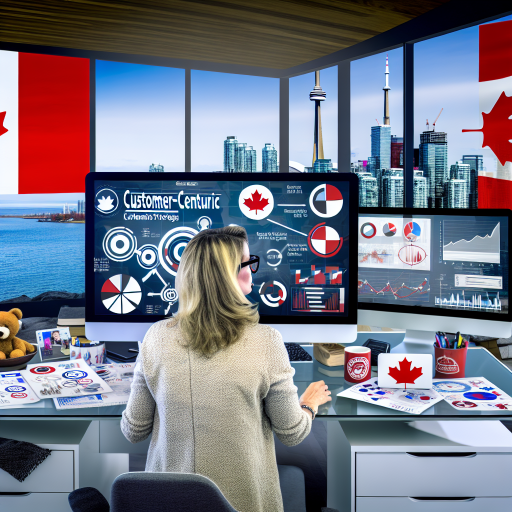Establishing a Strong Leadership Presence in Retail Management
Defining Leadership in Retail
Leadership is essential in retail management.
It shapes the store culture and influences employee performance.
Effective leaders promote a positive environment for both staff and customers.
Building Trust and Respect
Trust is a cornerstone of successful leadership.
Leaders should demonstrate consistency in decision-making.
Additionally, honesty fosters respect among team members.
Regular communication enhances understanding and cooperation.
Developing a Vision
A clear vision guides retail operations and strategies.
Leaders must articulate goals and expectations clearly.
This ensures everyone understands the direction of the business.
Moreover, involving the team in envisioning future goals encourages ownership.
Empowering Employees
Empowerment nurtures a sense of responsibility among staff.
Leaders should delegate tasks effectively to build confidence.
Encouraging innovation allows employees to contribute ideas.
This can lead to improved processes and increased sales.
Fostering Team Collaboration
Collaboration drives better team outcomes in retail.
Leaders should create opportunities for teamwork and bonding.
Regular team-building activities enhance relationships.
Encouraging open dialogue allows diverse perspectives to emerge.
Continuous Learning and Development
Retail leaders should prioritize ongoing training for their teams.
Regular workshops and seminars keep skills sharp and relevant.
Furthermore, providing mentorship opportunities can nurture future leaders.
This investment promotes growth and adaptability within the team.
Adapting to Change
The retail environment is often unpredictable.
Effective leaders should anticipate market trends and shifts.
Unlock Your Career Potential
Visualize a clear path to success with our tailored Career Consulting service. Personalized insights in just 1-3 days.
Get StartedBeing adaptable helps maintain competitiveness.
Leaders can encourage a culture that embraces change positively.
Measuring Success
Regularly evaluating performance is crucial for any retail business.
Leaders should establish clear metrics for success.
Analyzing sales data and customer feedback provides valuable insights.
Adjusting strategies based on this information fosters continuous improvement.
Implementing Effective Customer Relationship Management Practices
Understanding Customer Needs
Effective customer relationship management begins with understanding customer needs.
Engage customers through surveys and feedback mechanisms.
Additionally, use data analysis to identify purchasing patterns.
Train staff to actively listen and respond to customer inquiries.
Building Strong Relationships
Fostering strong relationships with customers enhances loyalty.
Moreover, communicate regularly through newsletters and promotions.
Create personalized experiences based on customer histories.
Utilize social media platforms to engage customers in real-time.
Leveraging Technology
Implement customer relationship management software for efficient tracking.
This technology centralizes customer data for better accessibility.
Additionally, automate communication to stay relevant and timely.
Use analytics tools to measure the effectiveness of your strategies.
Encouraging Customer Feedback
Solicit feedback to improve products and services continuously.
Customers appreciate when their opinions influence changes.
Furthermore, respond to feedback promptly to show appreciation.
Consider creating a rewards program for participating customers.
Training Employees Effectively
Invest in training programs for employees on customer interaction.
Ensure they understand the importance of customer feedback.
Regular role-playing exercises can enhance their skills.
Moreover, encourage a culture of service excellence within the team.
Measuring Success
Establish metrics to evaluate the success of CRM initiatives.
Regularly review customer satisfaction scores and retention rates.
Additionally, analyze sales data to gauge the effectiveness of your efforts.
Adapting strategies based on these metrics can drive long-term success.
Leveraging Data Analytics for Inventory Management and Sales Forecasting
Importance of Data Analytics
Data analytics significantly enhances decision-making in retail management.
Analyzing data leads to more informed inventory practices.
Retailers can predict sales trends and meet customer demands more effectively.
Improving Inventory Management
Effective inventory management reduces costs and increases efficiency.
Data analytics helps in identifying slow-moving products.
This insight enables retailers to optimize stock levels accordingly.
Moreover, it assists in preventing stockouts and overstock situations.
Implementing real-time inventory tracking improves accuracy and responsiveness.
Enhancing Sales Forecasting
Sales forecasting is essential for strategic planning in retail.
Using historical sales data and market trends boosts forecasting accuracy.
Retailers can align their marketing strategies with anticipated demand.
Furthermore, analytics tools can identify seasonal patterns in consumer behavior.
This understanding assists in planning promotions and inventory allocation.
Utilizing Advanced Tools
Implementing advanced analytics tools can streamline data processes.
Cloud-based platforms provide scalable solutions for data management.
These tools offer real-time insights and facilitate collaborative decision-making.
Integrating artificial intelligence further enhances predictive capabilities.
Training and Development
Investing in employee training is crucial for effective data utilization.
Staff should possess the skills to interpret analytical reports.
Workshops and ongoing education can boost data literacy within the organization.
Additionally, empowering employees fosters a data-driven culture.
Regular Evaluation and Adjustment
Regularly evaluating the effectiveness of analytics strategies is vital.
By monitoring key performance indicators, retailers can identify areas for improvement.
This process ensures the strategies remain relevant and effective.
Adjustments based on feedback can lead to enhanced outcomes over time.
Discover More: Career Growth Opportunities for Store Managers
Creating a Positive Store Culture to Enhance Employee Engagement
Understanding Employee Engagement
Employee engagement plays a critical role in retail success.
Engaged employees are more productive and motivated.
Furthermore, they deliver better customer service experiences.
Establishing Core Values
Start by defining clear core values for your store.
Core values guide decisions and behaviors within the team.
Moreover, they foster a sense of belonging and purpose.
Encouraging Open Communication
Implement regular communication channels for employees.
Open dialogues help build trust and transparency.
Additionally, they empower employees to share ideas and concerns.
Recognizing and Rewarding Contributions
Recognizing achievements boosts morale significantly.
Implement reward programs to celebrate exceptional performance.
Recognition can take various forms, such as awards or bonuses.
Providing Training and Development Opportunities
Invest in continuous training programs for your staff.
Training enhances skills and job satisfaction among employees.
Moreover, development opportunities prepare them for advancement.
Cultivating a Supportive Environment
Foster a culture of support among team members.
A supportive environment encourages collaboration and teamwork.
Additionally, it helps in mitigating workplace stress.
Promoting Work-Life Balance
Encourage employees to prioritize work-life balance.
Flexible scheduling can enhance job satisfaction significantly.
Moreover, it reduces burnout and turnover rates.
Soliciting Feedback and Making Improvements
Regularly seek feedback from staff regarding the work environment.
Acting on their suggestions shows that you value their input.
Moreover, continuous improvements lead to a more engaged workforce.
Find Out More: The importance of ongoing education for sales consultants
Developing and Adapting Merchandising Strategies Based on Market Trends
Understanding Market Trends
Retail managers must stay informed about current market trends.
Regularly analyzing consumer behavior helps identify these trends.
Utilizing data analytics tools enhances understanding of market shifts.
Competitor analysis also provides valuable insights into trends.
Creating Flexible Merchandising Strategies
Flexibility is crucial in developing merchandising strategies.
Retailers should adapt strategies based on real-time market data.
Incorporating feedback from sales staff can guide adjustments.
Consider seasonal changes that may influence customer preferences.
Utilizing Technology for Strategy Adaptation
Technology plays a vital role in modern retail management.
Implementing inventory management systems enhances responsiveness.
Leveraging customer relationship management (CRM) tools enriches data collection.
Online platforms provide quick access to customer preferences.
Engaging with Customers
Customer engagement is essential for successful merchandising strategies.
Implementing loyalty programs can help retain customers.
Encouraging feedback through surveys fosters better understanding.
Social media interactions provide insights into consumer interests.
Monitoring and Measuring Success
Regular assessment of merchandising strategies is necessary.
Establish key performance indicators (KPIs) to measure success.
Track sales data to determine the effectiveness of strategies.
Adjusting plans based on outcomes can lead to improved results.
Learn More: Benefits of Hiring a Business Development Manager for Companies

Innovating with Technology to Improve Customer Experience and Operations
Enhancing In-Store Experience
Retailers can use virtual reality to create immersive shopping experiences.
This technology allows customers to try products in a simulated environment.
Using augmented reality apps can also boost customer engagement and satisfaction.
These apps enable customers to visualize how products fit into their lives.
Moreover, smart mirrors can enhance the fitting room experience effectively.
Streamlining Operations with Automation
Automation can optimize inventory management significantly.
Robotic systems can track inventory levels in real-time.
Furthermore, automated checkout systems reduce wait times for customers.
This convenience encourages repeat visits and fosters customer loyalty.
Electronic shelf labels can also help maintain pricing accuracy automatically.
Leveraging Data Analytics
Data analytics can provide insights into customer preferences.
Retailers can use this information to tailor marketing strategies effectively.
Moreover, predictive analytics helps anticipate consumer trends.
This foresight enables smarter inventory purchases and reduces waste.
In addition, analyzing sales data allows for personalized promotions.
Building an Omnichannel Experience
An effective omnichannel strategy integrates online and offline shopping.
Retailers should ensure a seamless experience across multiple platforms.
Offering options like click-and-collect can enhance customer convenience.
Equally, a unified customer service team can address inquiries across channels.
This holistic approach fosters a deeper connection with customers.
Gain More Insights: Importance of Business Development in Modern Companies
Fostering Sustainable Practices in Retail Operations
Understanding Sustainability in Retail
Sustainability in retail involves creating a positive impact on the environment and communities.
This practice prioritizes ethical decision-making and resource conservation.
Moreover, it enhances brand reputation and customer loyalty.
Implementing Eco-Friendly Supply Chains
Retailers should evaluate their supply chains for sustainability opportunities.
Engaging with suppliers who prioritize eco-friendly practices is vital.
Additionally, adopting local sourcing reduces carbon footprints significantly.
Using sustainable packaging can also lower waste and enhance brand image.
Enhancing Employee Engagement
Employees play a crucial role in implementing sustainability initiatives.
Training programs can educate staff about sustainability goals.
Encouraging employee involvement fosters a culture of accountability.
Additionally, recognizing and rewarding sustainable practices can motivate teams.
Promoting Conscious Consumerism
Retailers can influence consumer behavior by providing sustainable options.
Highlighting eco-friendly products through promotions drives awareness.
Moreover, creating informative content can guide consumers toward sustainable choices.
In-store displays showcasing sustainable initiatives can also catch attention.
Measuring and Reporting Sustainability Efforts
Regularly measuring sustainability efforts is essential for continuous improvement.
Setting clear metrics allows retailers to track progress effectively.
Moreover, transparency in reporting fosters trust among customers and stakeholders.
Sharing success stories enhances a retailer’s credibility in the sustainability space.
Setting Measurable Goals and KPIs to Track Long-Term Performance
The Importance of Measurable Goals
Measurable goals provide clear direction for retail management.
They help to align team efforts with business objectives.
Moreover, measurable goals enable managers to track progress effectively.
Without these goals, it is challenging to assess success.
Establishing Key Performance Indicators (KPIs)
Key Performance Indicators (KPIs) are essential for monitoring progress.
Selecting the right KPIs is crucial for meaningful insights.
Common KPIs in retail include sales per square foot and inventory turnover.
Each KPI should link directly to specific business goals.
Setting Specific and Achievable Goals
Specific goals clarify what the team needs to accomplish.
For instance, increasing customer retention by 15% is both specific and measurable.
Additionally, achievable goals motivate teams to strive for success.
Setting unrealistic targets may lead to disappointment.
Utilizing the SMART Framework
The SMART framework enhances goal-setting processes.
SMART stands for Specific, Measurable, Achievable, Relevant, and Time-bound.
Using this framework ensures that goals are clear and attainable.
For example, a SMART goal could be to boost online sales by 20% within one year.
Regularly Reviewing Progress
Regular reviews of goals and KPIs are vital for long-term success.
These reviews help identify areas of improvement and achievement.
Moreover, they provide opportunities to adjust strategies as needed.
Establishing a routine for these reviews fosters accountability.
Engaging the Team in Goal Setting
Involving team members in the goal-setting process enhances buy-in.
When employees contribute to goals, they are more likely to be committed.
Additionally, this engagement promotes a sense of ownership.
Ultimately, collaboration can lead to more innovative ideas.
Leveraging Technology for Monitoring
Technology plays a crucial role in tracking performance metrics.
Utilizing tools like dashboards streamlines the monitoring process.
These tools provide real-time data for informed decision-making.
With technology, retailers can quickly identify trends and make adjustments.
Creating a Culture of Continuous Improvement
Fostering a culture of continuous improvement is essential for long-term success.
Encouraging feedback helps identify challenges and solutions.
Recognizing accomplishments motivates the team to keep improving.
Ultimately, this culture drives sustained performance and innovation.
Additional Resources
Thomas Haupt – SEPHORA | LinkedIn
How to Succeed in Canada’s Competitive Cannabis Retail Industry




